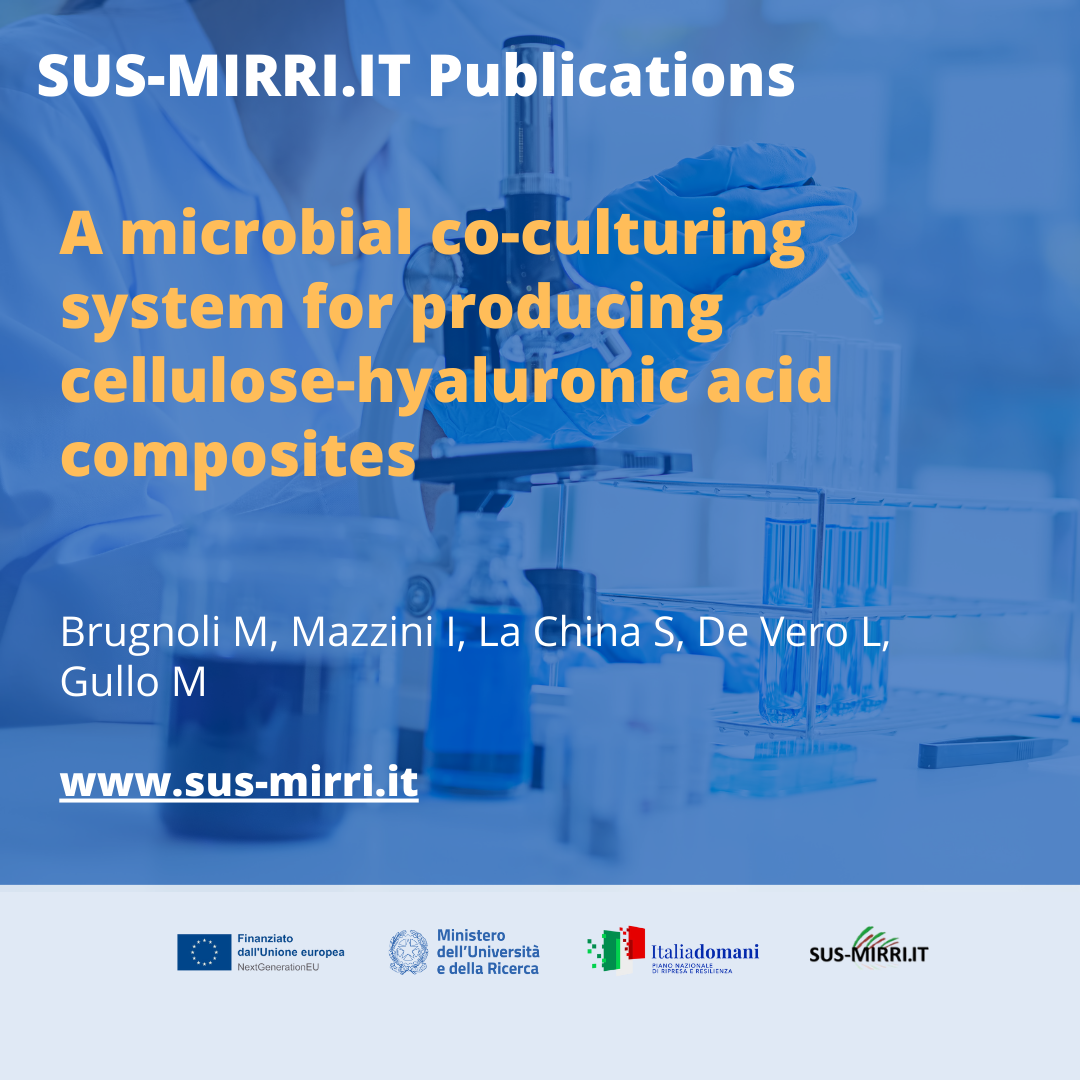Brugnoli M, Mazzini I, La China S, De Vero, L, Gullo M. A microbial co-culturing system for producing cellulose-hyaluronic acid composites. Microorganisms, vol 11 (6) https://doi.org/10.3390/microorganisms11061504
Abstract
In this study, a co-culture system combining bacterial cellulose (BC) producers and hyaluronic acid (HA) producers was developed for four different combinations. AAB of the genus Komagataeibacter sp. and LAB of the Lactocaseibacillus genus were used to produce BC and HA, respectively. Fourier-transform infrared spectroscopy, scanning electron microscopy, and X-ray diffraction were used to investigate changes in BC-HA composites chemical and morphological structure. Water absorption, uptake, and antibacterial properties were also tested. Outcomes highlighted a higher bacterial cellulose yield and the incorporation of hyaluronic acid into the composite. The presence of hyaluronic acid increased fiber dimension—nearly doubled for some combinations—which led to a decreased crystallinity of the composites. Different results were observed based on the BC producer and HA producer combination. However, water holding capacity (WHC) in all the samples improved with the presence of HA, while water uptake worsened. A thymol-enriched BC-HA composite showed high antibacterial activity against Escherichia coli DSM 30083T and Staphylococcus aureus DSM 20231T. Results could contribute to opening new applications in the cosmetics or pharmaceutical fields.
Open the complete publication: https://www.mdpi.com/2076-2607/11/6/1504
Follow SUS-MIRRI.IT Publications to see more: https://www.sus-mirri.it/publications/



